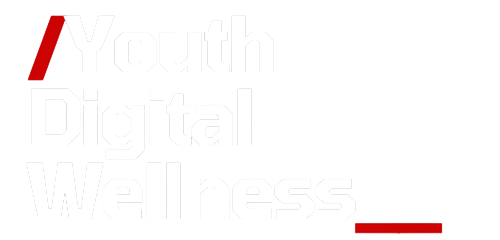In today’s world, our youth are more connected than ever — yet many feel more stressed, anxious, and distracted than any generation before. Phones buzz constantly, social media demands attention, and the “fear of missing out” drives endless scrolling. While technology is here to stay, so is the need to step back. This is where a Digital Detox becomes essential for protecting Youth Digital Wellness.
📱 What is a Digital Detox?
A Digital Detox means taking a planned break from digital devices — smartphones, laptops, tablets, or social media — to reduce stress, improve focus, and reconnect with real life. It doesn’t mean rejecting technology completely; it means regaining control over it.
🌍 Why Youth Need It Most
-
Mental Health at Risk
Excessive screen time is linked to anxiety, depression, sleep loss, and lower self-esteem among youth. Social media comparison culture makes this worse. -
Declining Focus
Students find it harder to concentrate on studies and long-term goals because constant notifications break attention cycles. -
Disrupted Relationships
Family dinners, friendships, and even school participation are suffering as youth prioritize screens over real-world interactions. -
Physical Concerns
Posture issues, digital eye strain, and lack of movement are all side effects of overexposure.
💡 Benefits of a Digital Detox
-
Clearer Mind: Less noise, more focus.
-
Better Sleep: No late-night scrolling improves rest and recovery.
-
Improved Relationships: Youth reconnect with family and friends offline.
-
Boosted Productivity: Energy goes toward meaningful goals, not endless feeds.
-
Emotional Resilience: Breaking free from validation-seeking online strengthens self-worth.
🚀 How Youth Can Practice a Digital Detox
-
Set Screen-Free Hours → e.g., no devices during meals or the first hour after waking up.
-
Weekend Detox → dedicate one day a week to offline hobbies (sports, reading, outdoor time).
-
App Limits → use built-in screen time controls or wellness apps.
-
Tech-Free Zones → bedrooms and classrooms should encourage offline focus.
-
Mindful Swaps → replace scrolling with journaling, meditation, or creative hobbies.
🏫 The Role of Parents and Schools
-
Parents can model healthy digital habits by putting their own devices aside during family time.
-
Schools can run awareness programs and encourage group digital detox challenges.
-
Communities can support by offering safe, fun, offline activities for youth.
🌟 Conclusion: Detox to Thrive
Digital detox is not about escaping technology; it’s about rebalancing life. For youth, this small step can mean better emotional health, stronger focus, and deeper connections. As part of the Youth Digital Wellness movement, digital detox helps young people shift from being controlled by screens to using them as tools for growth.
Because sometimes, the best way to reconnect with life… is to disconnect from the screen

Driven by a vision to educate and inspire, she began a mission to raise awareness about the hidden harms of the digital world. Her unique ability to express these challenges and her courage to stand alone in this fight make her voice powerful. She may not know how far her mission will go, but every day she works hard, determined to help young people take back control of their lives and build a healthier future beyond the screen

